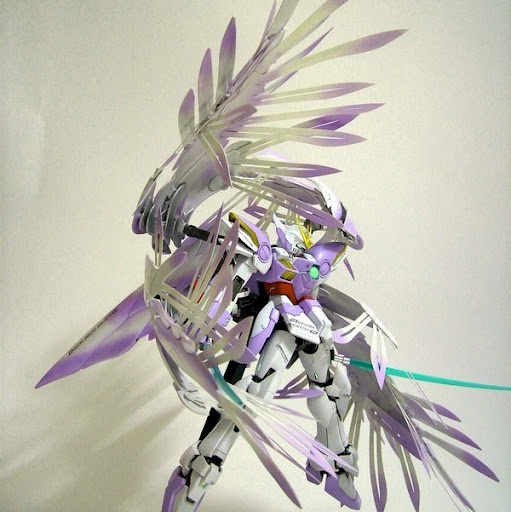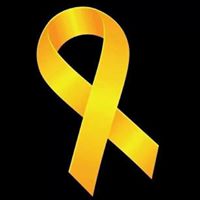Ka On Wong
age ~43
from Daly City, CA
- Also known as:
-
- Ka O Wong
- Kitty K Wong
- Kaon Wong
Ka Wong Phones & Addresses
- Daly City, CA
- Hayward, CA
- San Francisco, CA
- Emeryville, CA
Resumes

Ka Wang Wong
view source
Ka Wong
view source
Ka Yee Wong
view source
Ka Kit Wong
view source
Ka Kha Wong
view source
Ka Wai Elaine Wong
view source
Ka Lun Wong
view source
Consumer Safety Officer At Fda
view sourcePosition:
Consumer Safety Officer at FDA
Location:
San Francisco Bay Area
Industry:
Government Administration
Work:
FDA
Consumer Safety Officer
USDA-FSIS 2007 - 2010
Consumer Safety Inspector
Consumer Safety Officer
USDA-FSIS 2007 - 2010
Consumer Safety Inspector
Education:
California State Polytechnic University-Pomona 2003 - 2007
BS, Food Science
BS, Food Science
Lawyers & Attorneys
Medicine Doctors

Ka C. Wong
view sourceSpecialties:
Cardiovascular Disease
Work:
Ka C Wong MD
3270 Joe Battle Blvd STE 380, El Paso, TX 79938
9155928013 (phone), 9155928335 (fax)
3270 Joe Battle Blvd STE 380, El Paso, TX 79938
9155928013 (phone), 9155928335 (fax)
Education:
Medical School
Univ of Hong Kong, Fac of Med, Hong Kong
Graduated: 1972
Univ of Hong Kong, Fac of Med, Hong Kong
Graduated: 1972
Procedures:
Angioplasty
Cardiac Stress Test
Cardioversion
Echocardiogram
Pacemaker and Defibrillator Procedures
Cardiac Catheterization
Continuous EKG
Electrocardiogram (EKG or ECG)
Cardiac Stress Test
Cardioversion
Echocardiogram
Pacemaker and Defibrillator Procedures
Cardiac Catheterization
Continuous EKG
Electrocardiogram (EKG or ECG)
Conditions:
Angina Pectoris
Cardiac Arrhythmia
Heart Failure
Ischemic Heart Disease
Acute Bronchitis
Cardiac Arrhythmia
Heart Failure
Ischemic Heart Disease
Acute Bronchitis
Languages:
English
Spanish
Spanish
Description:
Dr. Wong graduated from the Univ of Hong Kong, Fac of Med, Hong Kong in 1972. He works in El Paso, TX and specializes in Cardiovascular Disease. Dr. Wong is affiliated with Hospitals Of Providence East Camp.
Isbn (Books And Publications)


Name / Title
Company / Classification
Phones & Addresses
Beaudry Street Project LLC
Property Development & Management of Ren · Real Estate · Business Services at Non-Commercial Site · Nonclassifiable Establishments
Property Development & Management of Ren · Real Estate · Business Services at Non-Commercial Site · Nonclassifiable Establishments
2224 6 St, Berkeley, CA 94710
5575 Ln Salle Ave, Oakland, CA 94611
5524 Beaudry St, Oakland, CA 94608
5575 Ln Salle Ave, Oakland, CA 94611
5524 Beaudry St, Oakland, CA 94608
Us Patents
-
Systems And Methods To Retard Copper Diffusion And Improve Film Adhesion For A Dielectric Barrier On Copper
view source -
US Patent:6764952, Jul 20, 2004
-
Filed:Mar 13, 2002
-
Appl. No.:10/099232
-
Inventors:Jengyi Yu - San Jose CA
Ka Shun Wong - San Jose CA
Sanjeev Jain - Santa Clara CA
Somnath Nag - Saratoga CA
Haiying Fu - West Linn OR
Atul Gupta - Mountain View CA
Bart J. Van Schravendijk - Sunnyvale CA -
Assignee:Novellus Systems, Inc. - San Jose CA
-
International Classification:H01L 2144
-
US Classification:438687, 438778, 438791, 438958
-
Abstract:Two sequential treatments within a chemical vapor deposition chamber, or within sequential chambers without a vacuum break, are performed on a copper layer to clean and passivate the copper surface prior to deposition of a copper diffusion barrier layer or a dielectric layer. The first treatment includes an ammonia, a hydrogen, or a hydrocarbon plasma cleaning of the copper surface followed by a short initiation of an organosilane precursor or a thin silicon nitride layer. A copper diffusion barrier layer may then be formed over the pretreated copper surface using an organosilane plasma, with or without a carbon dioxide or a carbon monoxide, or a silane with a nitrogen gas and an ammonia gas. Copper diffusion is retarded and film adhesion is improved for a dielectric layer or a copper diffusion barrier layer on the copper surface.
-
Medical Device Having Multiple Bending Sections
view source -
US Patent:20210045626, Feb 18, 2021
-
Filed:Aug 14, 2020
-
Appl. No.:16/994245
-
Inventors:- Redwood City CA, US
Ka Chun Wong - South San Francisco CA, US -
International Classification:A61B 1/307
A61B 1/005
A61B 1/05
A61B 1/00
A61B 34/30 -
Abstract:Certain aspects relate to systems and techniques for an endoscopic system to access, visualize, and treat pathologies in various organs via natural orifices and lumens of various organs. In one aspect, the system includes an elongate shaft configured for insertion into a urinary tract of a patient. The elongate shaft can include a proximal section, a distal section, a tip portion, and a plurality of pull wires extending along the elongate shaft and terminating at the tip portion of the elongate shaft. The plurality of pull wires may include a first and second pull wire. The first pull wire may be configured to articulate each of the proximal section and the distal section in a first direction. The second pull wire may be configured to articulate the distal section in a second direction independently of the proximal section, the second direction being transverse to the first direction.
-
Percutaneous Sheath For Robotic Medical Systems And Methods
view source -
US Patent:20200206472, Jul 2, 2020
-
Filed:Dec 27, 2019
-
Appl. No.:16/728948
-
Inventors:- Redwood City CA, US
Binh T. Nguyen - Newark CA, US
Ka Chun Wong - South San Francisco CA, US
Ryan Jeffrey Connolly - San Carlos CA, US
Javier O. Fajardo Vargas - Daly City CA, US
Umberto Scarfogliero - Redwood City CA, US
Zachary Stahl Morrison - Dallas TX, US -
International Classification:A61M 25/06
A61M 3/02
A61M 1/00
A61B 17/22
A61B 1/00
A61B 1/307
A61M 29/02
A61B 5/20
A61B 10/04
A61B 50/13
A61B 34/37
A61G 13/04
A61B 34/20 -
Abstract:Certain aspects relate to percutaneous sheaths for medical procedures as well as to related systems and methods. For example, a system for performing a percutaneous assisted medical procedure can include a percutaneous sheath. The percutaneous sheath can include a first conduit for providing aspiration into the kidney and a second conduit for passing a catheter into the kidney. The system can also include an aspiration catheter configured to be inserted into the kidney through the second conduit of the percutaneous sheath. A fluidics system can include an irrigation source comprising a pump and an aspiration source comprising a vacuum. The irrigation source can be connected to a fluid inlet of the percutaneous sheath that is connected to the first conduit. The aspiration source can be connected to the aspiration catheter.
-
Directed Fluidics
view source -
US Patent:20190175799, Jun 13, 2019
-
Filed:Dec 6, 2018
-
Appl. No.:16/212199
-
Inventors:- Redwood City CA, US
Ka Chun Wong - South San Francisco CA, US
Rachel Leigh Chok - Sunnyvale CA, US
Joshua F. DeFonzo - San Carlos CA, US
Binh T. Nguyen - Newark CA, US
Vivian Thalia Nguyen - Palo Alto CA, US
Rishi Nikhil Purohit - Fremont CA, US -
International Classification:A61M 1/00
A61M 3/02
A61B 17/22
A61B 18/26
A61B 50/13
A61B 1/307
A61B 1/267
A61B 10/02 -
Abstract:Methods and systems for administering directed fluidics during a medical procedure for removing an object are disclosed. A method includes inserting first and second medical instruments into a treatment site, providing irrigation and aspiration of the treatment site through the first and second medical instruments, determining a characteristic of one of the irrigation and the aspiration, and selecting a characteristic of the other of the irrigation and aspiration based on the determined characteristic.
Classmates

Ka Sin Wong
view sourceSchools:
Miles MacDonell Collegiate Institute Winnipeg Palestinian Territory, Occupie 2004-2008
Community:
Donnie Colvin, Lucie Snow, Oksana Sandra

Ka Wai Wong
view sourceSchools:
Bensonhurst Public School 128 Brooklyn NY 1985-1989
Community:
Dennis Alestra, Madelain Cohen, Ellen Rabinowitz, Jospeh Altieri, Patrick Marino, Ralph Testa

Ka Yiu Wong
view sourceSchools:
Forest Hill Elementary School Morganton NC 1997-1998
Community:
Cassondra Adkins, Amy Jones, Heather Jarrett, Latoshia Corpening, Anna Thompson, William Buckley, Larry Brewer, Chesley Peabody, Emily Smith, Tracey Yothers

Patricia Wong, Ka'U High ...
view source
Melva Mae Wong, Ka'U High...
view source
Debra Wong, Ka'U High Sch...
view source
Forest Hill Elementary Sc...
view sourceGraduates:
Neah Atiyyah Tucker Neah Atiyyah Tucker (1983-1989),
Elizabeth Boston (1971-1975),
Jill Greenway (1970-1976),
Ka Yiu Wong (1997-1998)
Elizabeth Boston (1971-1975),
Jill Greenway (1970-1976),
Ka Yiu Wong (1997-1998)
Youtube
Myspace
Googleplus

Ka Wong

Ka Wong

Ka Wong

Ka Wong

Ka Wong

Ka Wong

Ka Wong

Ka Wong

Ka Hsing Wong
view source
Ka Seong Wong
view source
Ka Keung Wong
view source
Ka Cheong Wong
view source
Ka Leung Wong
view source
Ka Yeung Wong
view source
Ka Cheung Wong
view source
Ka Karen Wong
view sourceFlickr
Get Report for Ka On Wong from Daly City, CA, age ~43















